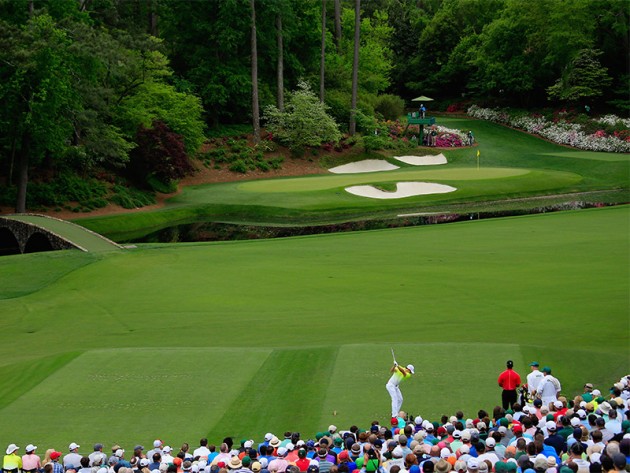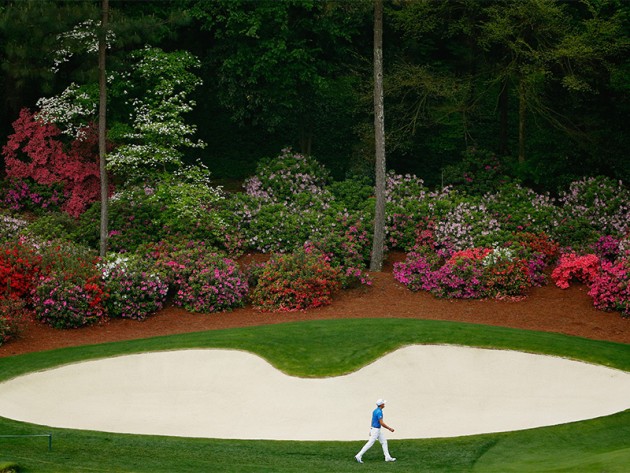Why are the bunkers at Augusta National white, and where does the sand come from? Read on to find out...

Why Are The Augusta National Bunkers White
The Masters is arguably the most iconic golf event in the world, having been played at the same course since 1934, and part of that iconic appearance is undeniably down to the unique white sand bunkers at Augusta National.
The bunkers at Augusta National have been filled with white sand for the past 40 years, ever since co-founder Clifford Roberts saw it for the first time in the early 1970s and insisted it be installed in time for the 1975 Masters.
In total there are 44 white sand bunkers at Augusta National, each majestic and hazardous in its own way. Of those 44, 32 are greenside and 12 are located on the fairways (in fact there are 10 holes that don’t have fairway bunkers at all).
The sand that goes into the bunkers is called ‘Spruce pine sand’ and is named after the mining district in Western North Carolina in which it is found.
The story of the 2016 Masters:
In fact the sand is actually quartz, a waste product of the mining process that takes place in Western North Carolina. The quartz is so pure that it prevents golf balls from plugging or burrowing into tricky lies.
“I’d rake it with my hand if I needed to,” said Jim ‘Bones’ Mackay, Phil Mickelson’s caddie. “It fits the place so well. It brings out the green in the grass. It plays very, very well. You don’t hear about guys complaining about lies or balls getting away from them out of the bunkers.”
Related: Why do all the caddies wear the same uniform at The Masters?
“It’s very soft on top and has a firm base”, said Zach Johnson, the 2007 Masters champion. “You can’t necessarily spin it a ton, but it’s pure. What’s great about it is you have substantial high lips, but you won’t see a ball plug. Ever. It’ll hit the bank and go back to the middle of the bunker or go through it.”

Lee Westwood and Louis Oosthuizen walk down the 10th at the 2012 Masters Tournament
The massive fairway bunker on the 10th hole is one of Augusta’s most recognisable. It sits almost 400 yards off the tee, at the bottom of the hole’s steep slope. Anyone landing in it has more than likely mishit their second shot.
The bunker that sits behind the par 3 12th another that is particularly intimidating. Finding it leaves players with a tricky downhill shot back towards Rae’s Creek.

The par 3 12th is closely guarded by three tough greenside bunkers
“You basically don’t want to shortside yourself around any of the greens,” said Mike Weir, the 2003 Masters Champion.
On the par 5s, the back bunkers at 13 are some of the most difficult, particularly if the pin is at the front of the green.
Related: 10 greatest Masters shots
“The green is sloping away from you towards the creek, and like on 12, you’re looking at the water”, Weir said.

Rickie Fowler walks alongside the huge greenside bunker at the part 5 13th
So in summary, the sand not only looks great, contrasting beautifully with Augusta’s fairways and shimmering ponds, it also plays differently to other types of sand, and is so pure that players never complain about buried lies.
This article Why Are The Augusta National Bunkers White? appeared first on Golf Monthly.